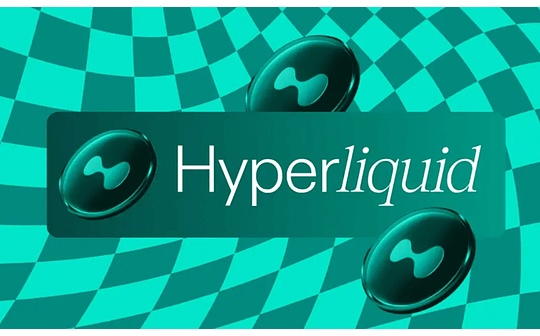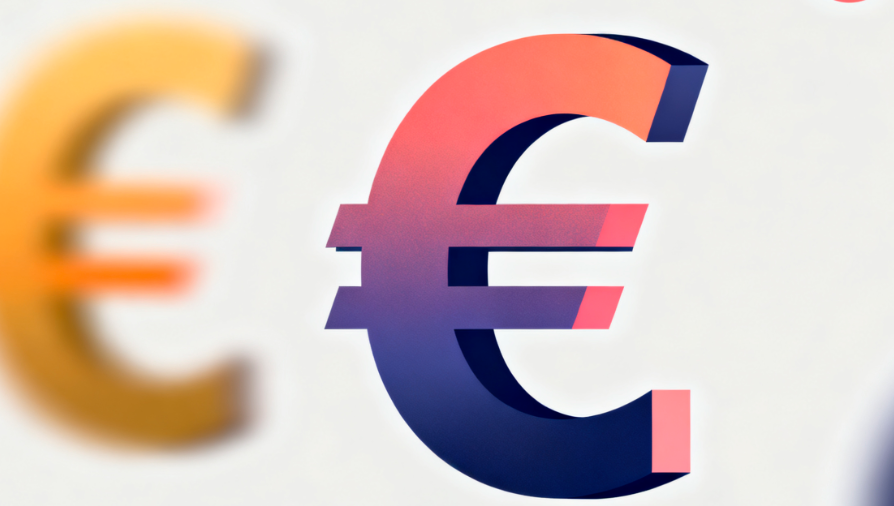
Hyperliquid, an anonymous decentralized exchange built by a small team of engineers, has attracted heavyweight investors and achieved trillion-level trading volume in just two years. The platform focuses on perpetual contract trading. Perpetual contracts are contracts with no expiration date, dominating the cryptocurrency speculation market with a monthly trading volume exceeding $6 trillion.
Although there's a vast disparity in scale with industry leader Binance, Hyperliquid has surpassed Coinbase in some areas and established a competitive advantage among decentralized exchanges.
Its development has made it a focal point in the wild world of crypto. Supporters praise its speed and transparency, but this also placed it at the center of last week's market crash, where traders on the platform suffered $10 billion in losses.
Hyperliquid remains dominated by a core small circle, raising questions among supporters about its degree of decentralization. For supporting institutions like Paradigm and Pantera Capital, this is both a bet on the future of digital finance and a warning that much of the industry's activity remains outside the formal regulatory system.
Earlier this year, at an industry summit hosted by Coinbase, when executives from BlackRock and Coatue met with crypto figures to discuss development strategies, Jump Trading President Dave Olsen specifically pointed out Hyperliquid as Binance's "first heavyweight competitor."
What exactly are Hyperliquid's characteristics? Why was it able to attract former Boston Fed President Eric Rosengren to join the board of its ecosystem-associated Nasdaq-listed fund, and successfully capture market share?
Essentially, it's a minimalist trading platform operated by a team of about 15 people at the Singapore-based Hyperliquid Labs. The platform's front end blocks U.S. users per industry practice, but anyone can trade on its underlying blockchain. The no-KYC mechanism is its core attraction, reminiscent of early, rapidly growing exchanges that used similar models, which often quickly drew regulatory attention.
Tarun Chitra, founder of crypto risk modeling firm Gauntlet, noted: "The highest growth rates are often in the newest or least mature markets, because most existing market participants don't understand the logic of their existence."
Hyperliquid was co-founded by Jeff Yan and a co-founder using the pseudonym "iliensinc". Jeff Yan, previously at Hudson River Trading, had run the crypto trading platform Chameleon Trading before turning to building trading systems pursuing ultimate speed, mostly operating outside traditional regulation.
But speed alone cannot ensure survival; the real test lies in liquidity. Platforms like dYdX and GMX once relied on token incentives to attract market makers, revealing the model's fragility when rewards dried up. Hyperliquid's solution was launching the Hyperliquid Perpetuals (HLP) market maker mechanism, where user deposits form a platform fund pool, and algorithms continuously post bid and ask quotes, ensuring a counterparty for every trade. This system's capital scale has now exceeded $500 million.
Felix Bruck, an algorithmic trader at market maker Wintermute, said: "No users, no market makers; lack of liquidity also doesn't attract users. Hyperliquid successfully solved this chicken-and-egg problem. Its launched HLP pool can provide quotes for any market."
(Note: David Schamis, Founding Partner and Chief Investment Officer of Atlas Merchant Capital, discussed Hyperliquid exchange's new $888 million agreement to issue the HYPE token on the Bloomberg Crypto show with Tim Stenovec and Scarlet Fu.)
Some crypto experts point to potential conflicts of interest: the protocol's HLP mechanism can act as the counterparty in certain trades. Former Coinbase executive Vishal Gupta stated: "Operating an exchange should involve setting rules and acting as a referee, not trading yourself, because no one can ensure the fairness of rule enforcement."
Supporters argue that unlike problematic exchanges of the past, every HLP trade is recorded on-chain in real-time, forming an auditable trail, which constitutes its core difference from traditional platforms. As the platform matures and large external market makers join, the proportion of HLP trading has shown a declining trend. However, it's noteworthy that, unlike most competitors, HLP's code has not yet undergone public third-party auditing.
A Hyperliquid Labs spokesperson stated: "Unlike centralized exchanges, transparency is inherent to Hyperliquid. Every trade, liquidation, and validation action can be verified in real-time, and the platform never custodies user funds."
During the weekend market sell-off, the HLP mechanism drew attention. Public data showed that when large traders on the platform suffered losses, this fund pool instead gained approximately $40 million. The crash also triggered the automatic deleveraging mechanism (ADL), standard for crypto exchanges, where the system closes profitable positions to absorb the failing flow when buffer funds are exhausted.
In other words, Hyperliquid reduced its own losses by using winners' money to cover losers, even profiting $40 million.
Analysts like Chitra from Gauntlet pointed out that Hyperliquid's ADL rules have textbook aggressive characteristics, which might be one factor contributing to HLP's profitability.
After last week's crash, Jeff Yan posted on platform X, emphasizing that HLP is a "neutral liquidator that does not pick and choose profitable liquidation opportunities," and explained that Hyperliquid's liquidation volume appears large precisely because the data is "fully on-chain," whereas centralized exchanges often underreport liquidation volumes.
If HLP is the engine, the validator nodes are the control center. Hyperliquid has only about 24 validator nodes, in stark contrast to Ethereum's network of over a million nodes. Critics point to its excessive centralization of power, with the Hyper Foundation controlling nearly two-thirds of the staked HYPE native tokens, giving it significant influence over validator node decisions and governance, although in some recent resolutions, its nodes chose to abstain to follow community consensus.
Kam Benbrik, Head of Research at blockchain validation firm Chorus One, noted: "Controlling more than two-thirds of the staked tokens means you can do whatever you want on the chain."
This power contradiction was highlighted in the so-called "JELLY event": when large bets on an illiquid token threatened HLP's solvency, validator nodes voted to liquidate the trade, and the foundation used its own funds to compensate affected users.
At that moment, Hyperliquid acted like a market operator intervening, similar to a traditional exchange rolling back a trade. Jeff Yan called this an "extreme situation" requiring immediate action from the then 16 validator nodes to protect users.
Hyperliquid's financial structure uses most trading fees to repurchase HYPE tokens, creating a flywheel effect where trading volume pushes up the token price. The assistance fund using platform fees for HYPE token buybacks now holds over $1.4 billion. Supporters praise it as a growth engine, while critics warn that buybacks typically only boost token prices in the short term.
Seasoned crypto investor Santiago Roel Santos pointed out that token buybacks are "highly reflexive," relying on continuously growing trading volume to sustain, and this model is only sustainable if Hyperliquid consistently outperforms larger competitors.
Hyperliquid prides itself on innovation, but its model of incentivizing user participation and liquidity by issuing tokens deeply tied to platform growth is somewhat traditional. Although Hyperliquid employs transparent on-chain operations, numerous previous platforms have demonstrated that crises follow when technical demands succumb to greed for fragile reward protocols.
Market enthusiasm remains high. Paradigm invested $888 million to support a Nasdaq-listed fund holding HYPE, allowing traditional investors to participate without directly trading.
(Note: Board members of this listed fund include Rosengren.)
According to DefiLlama data, over 100 projects are now developing ecosystems based on Hyperliquid, and its scale is already comparable to BNB Chain or Solana.
David Schamis, Co-founder of Atlas Merchant Capital, stated: "It's both a Coinbase-like exchange and an Ethereum-like Layer-1 blockchain, both fused into one system." He, who will also serve as the fund's CEO, revealed, "With fewer than 15 full-time employees, the platform has achieved over $1 billion in annualized free cash flow."
After Hyperliquid's upgrade this week, experienced users can create perpetual futures markets in minutes, without approval from a listing committee. Creators need to stake HYPE worth millions of dollars as collateral, and validator nodes can slash the stake if misuse is detected.
This is a common risk control mechanism in proof-of-stake blockchains, potentially fostering markets for new tokens or volatility-tracking products. Essentially, Hyperliquid not only opens markets to traders but also allows them to build markets themselves.
Disclaimer
This content does not represent the views of ChainCatcher. The opinions, data, and conclusions in the article represent the original author's or interviewee's personal views. The compiler maintains a neutral stance and does not endorse their accuracy. This does not constitute advice or guidance in any professional field. Readers should use it prudently based on independent judgment. This compilation is for knowledge-sharing purposes only. Readers must strictly comply with laws and regulations in their region and not participate in any illegal financial activities.
















